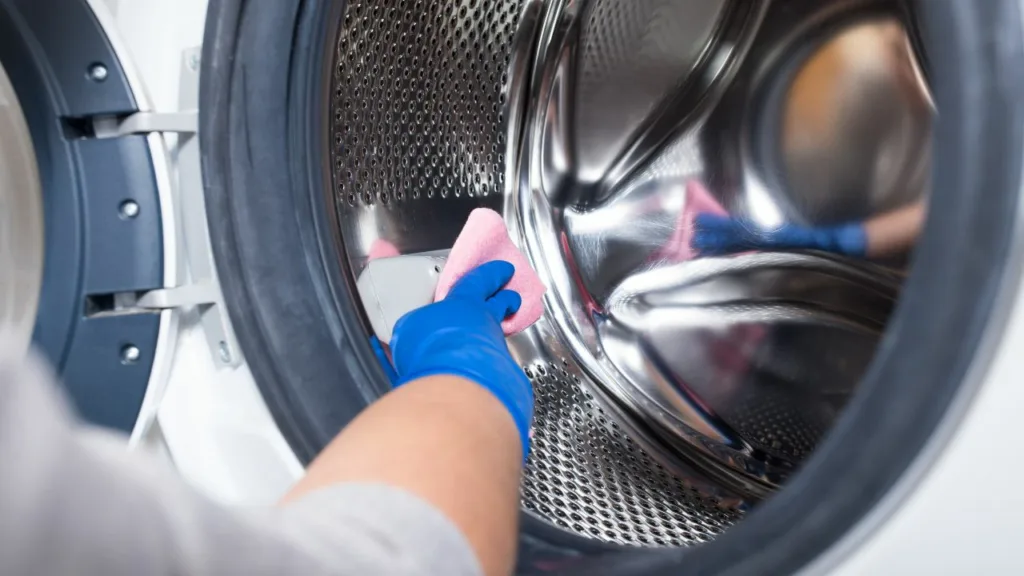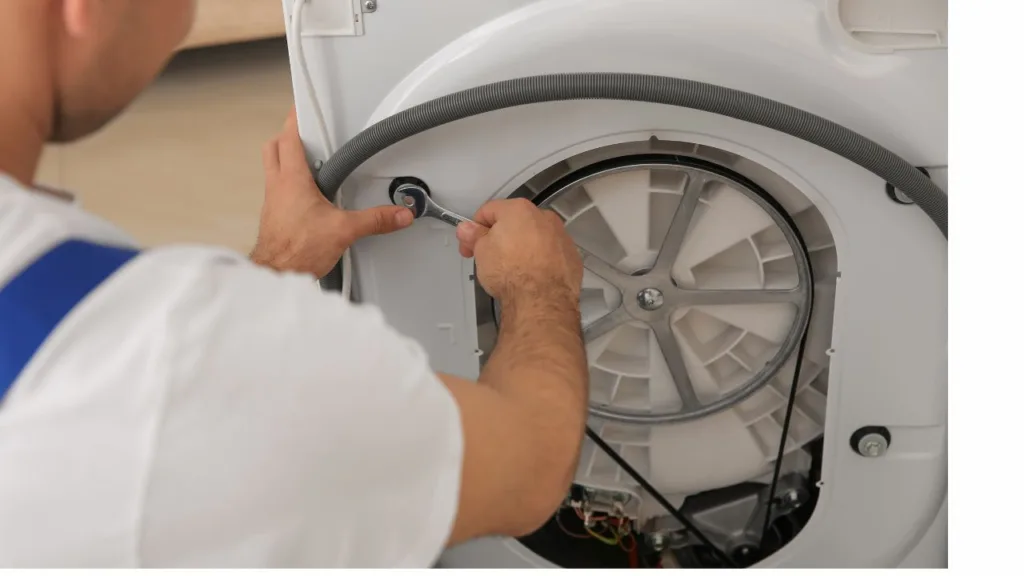
Is your washing machine starting to produce odd smells, or are you noticing strange stains on your laundry? The culprit might be sludge build-up. This gunky mix of detergent residue, fabric softener, minerals from hard water, body oils, and stray fibers can create a breeding ground for bacteria and mold within your washer. A dirty washer not only leads to unpleasant odors, but it also means your clothes aren’t getting the thorough cleaning they deserve. Our blog has professional Washing machine drum cleaning advice.
Understanding Sludge Build-Up in Your Washing Machine
Several factors can contribute to the icky sludge collecting in your washing machine:
- Overuse of detergent: Using more laundry detergent than necessary leads to excess residue that can accumulate over time.
- Fabric softener: Fabric softeners leave a waxy coating that contributes to sludge build-up, especially when used in large amounts.
- Hard water: Hard water contains high levels of minerals that can settle and create a stubborn layer of build-up.
- Low-temperature washes: Frequent cold washes don’t always dissolve detergent fully and don’t provide enough heat to eliminate bacteria growth.
- Body oils and dirt: Our clothes carry sweat, body oils, dirt, and other debris that contribute to sludge formation over time.
Signs of Sludge Build-Up
Here’s how you can spot signs of a sludgy washing machine drum:
- Foul odors: A musty, damp smell emanating from your washing machine is a strong indication of bacterial buildup.
- Stains on laundry: Odd gray streaks or stubborn stains on your freshly washed laundry could be due to the sludge residue redepositing on your clothes.
- Visible gunk: Take a look around the rubber seal, detergent dispenser, and inside the drum itself for signs of greasy buildup. Get more Washing machine drum cleaning tips
Step-by-Step Guide to Removing Sludge Build-Up
Step 1: Gather the Necessary Supplies
- White vinegar
- Baking soda
- Cleaning cloths or sponges
- Old toothbrush (optional)
Step 2: Clean the Washing Machine Drum with Vinegar
- Pour 2-4 cups of white vinegar directly into the empty washing machine drum.
- Run a hot water cycle on the longest and most vigorous setting. Vinegar’s acidity helps break down residue and disinfect the drum.
Step 3: Scrubbing the Drum with Baking Soda
- Make a paste of baking soda and a little water.
- Apply the paste to any stubborn sludge spots inside the drum.
- Let the paste sit for about 15 minutes.
- Use a damp cleaning cloth or a sponge to scrub the areas with the baking soda paste, focusing on any visible residue.
Step 4: Cleaning the Rubber Seal and Detergent Tray
- Lift the rubber seal around the door and clean the inside with a vinegar and water solution. Use an old toothbrush to get into the crevices.
- Remove the detergent dispenser tray (if possible) and soak it in warm water and vinegar. Scrub away any buildup.
Step 5: Running a Hot Water Cycle
- After cleaning, run one more hot water cycle without any detergent or vinegar to thoroughly rinse away any residues.
Prevention Tips to Avoid Future Sludge Build-Up
- Regular Cleaning Routine: Clean your washing machine with vinegar once a month to keep sludge at bay.
- Proper Detergent Usage: Follow the detergent instructions and avoid using excessive amounts. Consider switching to liquid detergent, as it tends to leave less residue than powders.
- Leave the Door Open After Use: Allow the washer to air out and dry between washes to prevent mold and mildew growth.
- Use hot water washes: Run regular hot water cycles to help dissolve detergent and eliminate bacteria.
Troubleshooting Common Issues During Cleaning
- Persistent Odors: If a strong odor remains, try running an additional hot cycle with a commercial washing machine cleaner.
- Stubborn Stains: For tough stains, use a bleach solution (if safe for your machine). Consult your washer’s manual for guidance.
- Sudden Leaks or Malfunctions: If your washer malfunctions during cleaning, stop immediately and consult a professional.
Importance of Regular Maintenance
Think of your washing machine as an investment in the cleanliness of your clothes and home. Regular maintenance, including cleaning out sludge, ensures:
- Cleaner Laundry: A clean washing machine means cleaner, fresh-smelling clothes.
- Machine Longevity: Preventative maintenance extends the lifespan of your appliance, preventing costly repairs or premature replacement.
- Odor Prevention: Eliminate musty smells that can transfer to your laundry and even throughout your home.
conclusion
Get in touch with us for repairs and Washing machine drum cleaning tips
Washing machine sludge build-up is a common but easily fixable household annoyance. By following these simple steps, you’ll restore your washing machine to its best potential, giving your clothes the sparkling, fresh-smelling clean you want.Remember, a little prevention goes a long way. With regular cleaning and mindful product usage, you can keep sludge at bay and enjoy a clean, efficient washer long into the future.

fill out our form - Washing machine cleaning tips
Frequently asked questions
-
1. How do I know if my washing machine drum is bad?
- Noises: Grinding, rumbling, banging, or clunking, especially during the spin cycle.
- Movement: Excessive movement or looseness when you try to move the drum by hand.
- Leaks: Water leaking around the door seal or from under the machine.
- Clothes Damage: Rips, tears, snags, or pulls on your clothes after washing.
- Visible Damage: Cracks, dents, or rust inside the drum.
If you notice any of these signs, stop using the machine and call a repair technician.
-
2. What is the best way to clean a washing machine drum?
- Pour 2 cups of white vinegar into the drum.
- Run a hot water cycle.
- Wipe down the drum afterward to remove any residue.
-
3. How do I get rid of mold and mildew in my washing machine drum?
- Vinegar is your friend! Run a hot water cycle with 2 cups of vinegar.
- For stubborn mold, scrub with a baking soda paste.
- Leave the door slightly open after washes to prevent mold growth.
-
4. How can I prevent my washing machine drum from getting dirty?
- Leave the door slightly ajar after washes to allow it to dry.
- Use the correct amount of detergent to avoid buildup.
- Clean the detergent drawer and door seal regularly.
- Run a hot water cycle with vinegar monthly.
-
5. Are there any parts of the washing machine drum that need special attention?
- Yes, the door seal! Wipe it down regularly to prevent mold and mildew.
- Also, check for any small items that might be trapped in the seal.
